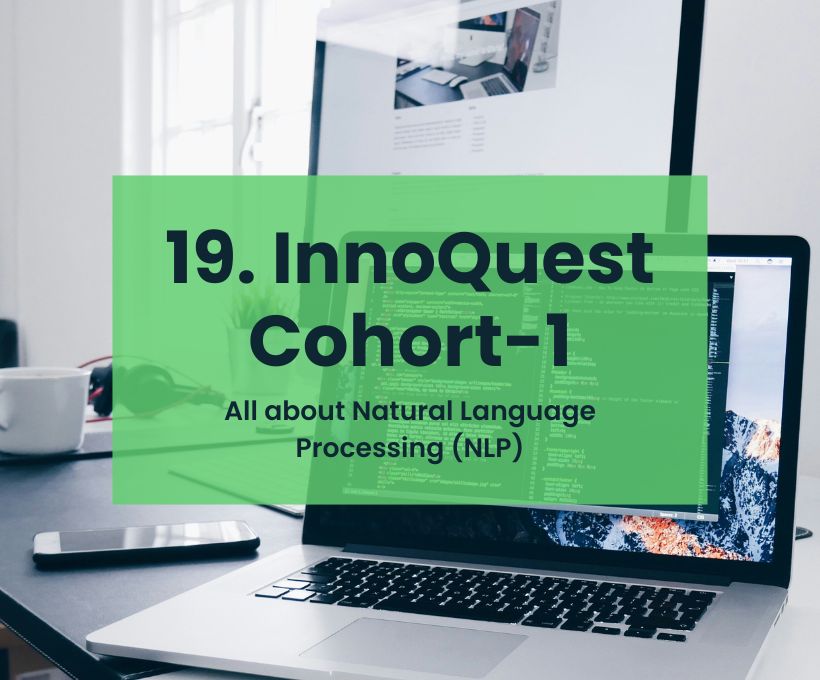Table of Contents:
- Introduction
- Key Learnings from the Lecture
- Applying the Teachings to Real-World AI Projects
- Conclusion
1. Introduction
As part of my journey through the Innoquest Cohort-1 Professional AI/ML Training by Innovista, Lecture 19 provided a comprehensive deep dive into Natural Language Processing (NLP) and its application in building machine learning models. This class focused on optimizing data preprocessing and understanding embeddings, offering hands-on experience using PyTorch to build a Convolutional Neural Network (CNN) classifier for text classification tasks. It was a session that not only sharpened my technical abilities but also gave me a broader understanding of how effective NLP models are designed and deployed.
2. Key Learnings from the Lecture
Preprocessing Techniques in NLP
One of the key takeaways from this lecture was how to approach preprocessing in a more focused and efficient way. The instructor emphasized that not all preprocessing techniques should be applied to every dataset. Instead, the goal is to identify and implement only the necessary steps that contribute directly to the task at hand. This principle, discussed in a real-world analogy, serves as a powerful reminder that quality over quantity is crucial, whether in preprocessing steps, model architecture, or overall design.
In the session, we worked with the IMDB reviews dataset, which contains 50,000 reviews. We began the preprocessing by:
- Removing HTML tags
- Stripping out URLs
- Eliminating stopwords and punctuations
The use of optimal preprocessing techniques was highlighted, such as utilizing the translate method for punctuation removal, which was both efficient and effective. This not only saved time but also streamlined the workflow, especially when dealing with large datasets.
Embeddings: Word2Vec and Beyond
After completing the preprocessing, we delved into the concept of embeddings. We discussed how Word2Vec embeddings are generated and explored their uses in natural language understanding. The training session included practical experiments where we:
- Found similar words
- Conducted vector arithmetic to understand the relationships between words in vector space
The embeddings we used in this session were the slim version of Word2Vec, with a vocabulary size of around 300,000 words. While the original embeddings have a significantly larger vocabulary (30 million), this slim version allowed us to quickly get a practical understanding of embedding usage in NLP tasks.
Building a CNN Classifier for Text
A major part of the lecture involved the construction of a CNN classifier to classify the processed IMDB reviews. We used a relatively simple but effective CNN architecture consisting of three convolution layers, each with different kernel sizes (3, 4, and 5). This architecture enabled the model to effectively process n-grams (trigrams, 4-grams, and 5-grams) from the text.
Additionally, a dropout layer with 50% strength was incorporated to prevent overfitting, ensuring better generalization of the model. Despite not training the model in this session (which will be covered in the next class), this class provided solid groundwork for text classification tasks using CNNs.
Interestingly, although we employed a CNN for classification, I found it to be an insightful choice, as it’s often common to see RNNs, LSTMs, or Transformers being used for such tasks. This class was an excellent mix of reinforcing prior knowledge while introducing new concepts—such as the use of CNNs for NLP tasks—in a practical and applicable manner.
3. Applying the Teachings to Real-World AI Projects
The knowledge gained from this class is immediately applicable in real-world AI/ML projects. The key insights into preprocessing NLP data and working with embeddings have equipped me with tools to handle text data more efficiently. Furthermore, the ability to design and implement a CNN classifier tailored to specific NLP tasks is an invaluable skill for future projects, especially in building scalable text classification systems.
4. Conclusion
The lecture not only enhanced my technical skill set in preprocessing and embeddings but also provided an insightful perspective on how to approach real-world challenges in NLP. The practical application of these techniques using PyTorch reinforced my understanding of both theoretical and hands-on aspects of deep learning.
I look forward to further refining my skills and collaborating on more advanced AI/ML projects. There is a growing need for well-designed, efficient NLP models, and I am excited to bring these insights into my professional work and future collaborations.
